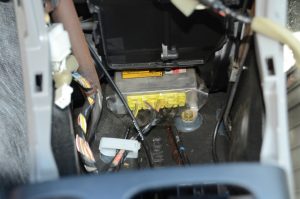What is an EDR?
An event data recorder (EDR) is a device used to record vehicle data during an accident sequence. It is often referred to as a vehicle’s “black box.” Currently, about 99% of
The primary job of most EDR’s is to detect forces generated during impacts and determine whether or not to activate seat belt tensioners and/or airbags. Besides recording the speed of the vehicle in the seconds leading up to impact, the EDR may also record the steering angle, whether the seat belts were buckled, when/if the brakes were applied, when/if the airbags were deployed, the percentage throttle that was applied, and more. In trucks with diesel engines, the EDR may also record information related to sudden changes in speed.
Data from may be stored either temporarily or permanently depending on the specifics of the incident being investigated. In either case, it is often critical to download EDR data as soon as possible to preserve the evidence and tie it back to the event date. Even if a full investigation is not immediately needed, the data can be downloaded and analyzed at a later date if necessary. However, if the vehicle is driven or salvaged, the data could become lost forever.

